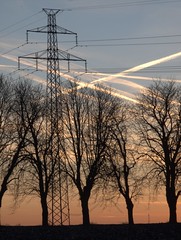Whole Foods has stepped into the ring in the fight between consumers and the government over food labeling of GMOs. The company recently announced that by 2018, “all products in U.S. and Canada stores must be labeled if they contain genetically modified organisms (GMOs)”.
This announcement to require labeling of GMOs speaks loudly to the food industry and the government on industry practices. A clear message is being sent that people have the right to know the contents of their food they purchase and that a company which markets food as being certified organic has a duty to assure the truth of any such statements to that extent. Without mandatory labeling, it is impossible for stores such as Whole Foods to guarantee non-GMO products to their customers; however, forging business relationships with companies who are willing to truthfully disclose the contents of food products will go a long way to identify and support worthy businesses. This is not to say that a product cannot contain GMOs. Rather, they will not be sold at Whole Foods. There are some people who do not even read food labels or show concern for such issues, and there still will be places for them to shop.
Recent efforts to require GMO labeling in California was defeated, largely as a result of millions of dollars in advertising against the ballot measure by corporate proponents of GMOs, namely Monsanto and PepsiCo. It is difficult to understand the controversy over food labeling and the government’s failure to require labeling on foods containing GMOs. Additionally, it is puzzling that the government opts to block the consumers’ right to know what is contained in the food they purchase. To this end, Gary Hirshberg, the CEO of Stonyfield Yogurt and chairman of the Just Label It campaign noted that “there are . . . lots of reasons to label these foods: health and environmental concerns, ethical/religious views or just people want to know”. Statistics on the need to know whether or not foods contain GMOs indicate that an overwhelming majority of Americans (92%) want food labeling.
The decision by Whole Foods to require labeling foods if they contain GMOs is a major step forward for the green movement and for people who insist on making informed choices on food purchases. This decision also reinforces the commitment of stores such as Whole Foods to sell food that is organically grown. This plan offers much-needed support to the suppliers of certified organic products. It is a clear indication that the proponents of healthy living will not be dominated or defeated by big corporations on the issue of right to know and to choose the food they want to eat. Hopefully, many more companies will join Whole Foods and manufacturers, such as Stonyfield, in supporting consumers’ right to know whether or not their food contains GMOs. To do so is to live green, be green.
Source for this article:
1. http://www.huffingtonpost.com/2013/03/08/whole-foods-gmo-labeling-2018_n_2837754.html?utm_hp_ref=green.
2. http://www.wholefoodsmarket.com/about-our-products/product-faq/gmos.
3. http://justlabelit.org/.









